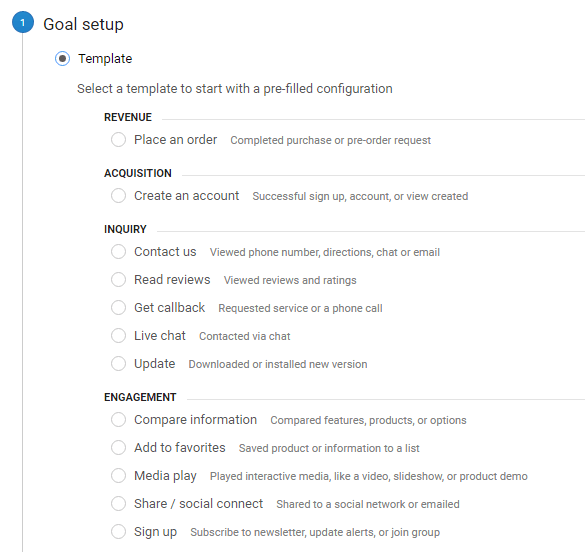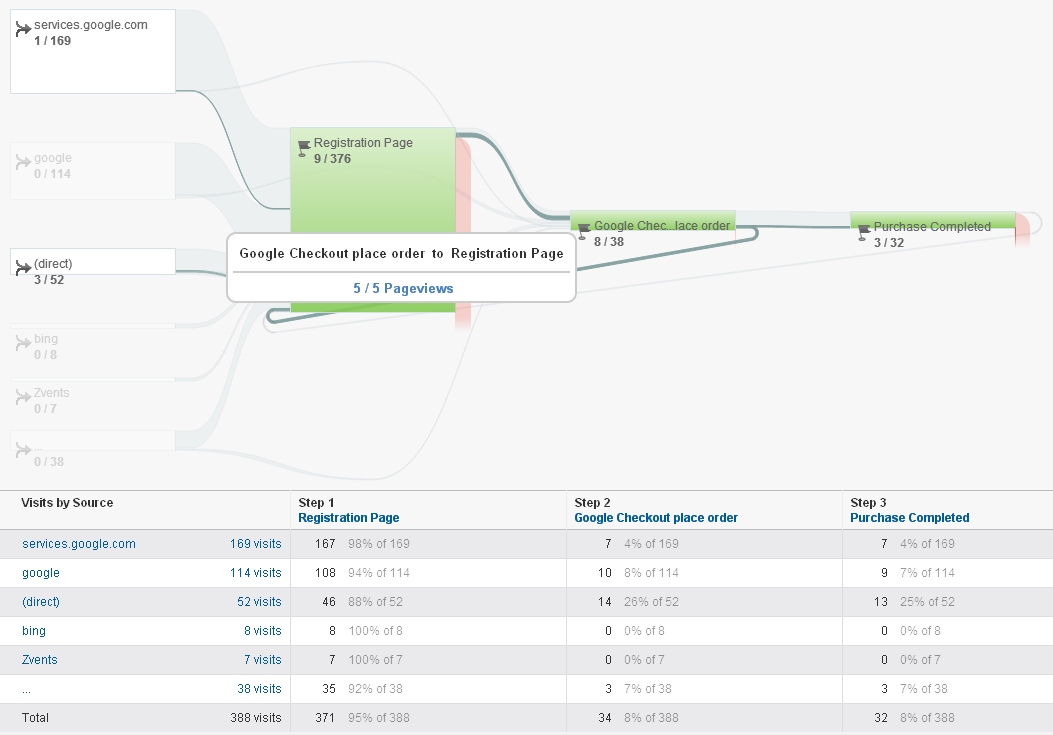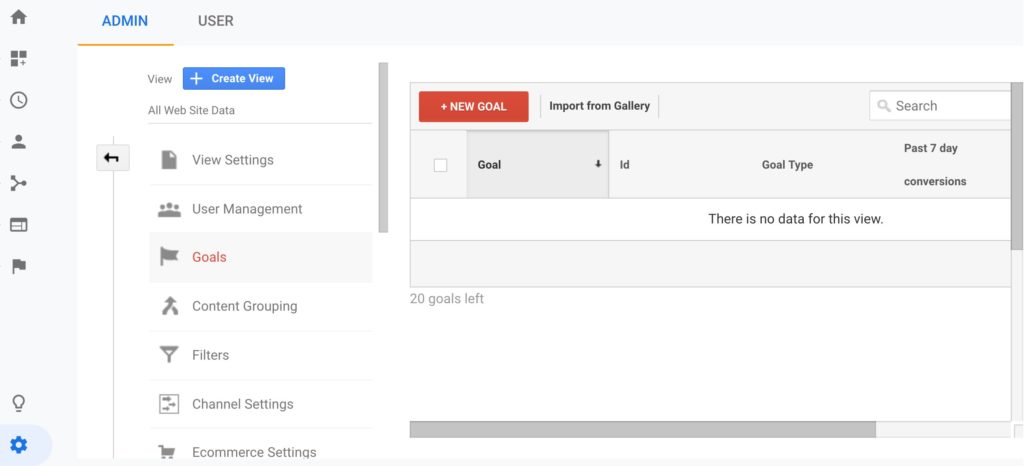Revealing the Blind Attractions: Understanding What Google Analytics Goals Can not Measure
In the realm of digital analytics, Google Analytics stands as a powerful tool for tracking and examining on-line customer communications. Nonetheless, in the middle of its durable abilities, there exist dead spots that often escape dimension. Recognizing what Google Analytics objectives can not measure is vital for acquiring a detailed sight of individual behavior and engagement. As we look into the intricacies of these dead spots, we uncover a complicated web of undiscovered areas that hold beneficial understandings into customer actions and motivations, tough traditional wisdom and losing light on the constraints of our data-driven understanding.
User Habits on External Platforms
Recognizing how users communicate on exterior platforms is critical for maximizing on the internet techniques. Exterior systems, such as social media networks, reference websites, and on-line forums, play a considerable duty in driving web traffic to a firm's website. By assessing individual habits on these platforms, organizations can obtain valuable understandings right into the efficiency of their advertising efforts and the preferences of their target audience.
One key facet of individual habits on external systems is the reference source. By tracking where the users are originating from, services can identify which systems are driving the most traffic to their website. This details can aid business allot their sources more properly, focusing on the systems that produce the very best outcomes.

Offline Conversions and Interactions
Analyzing customer behavior on exterior systems supplies useful insights into online approaches; nonetheless, considering offline conversions and communications is just as imperative for an extensive understanding of a business's general performance. While Google Analytics excels at tracking on the internet communications, it drops short in catching the complete customer journey that frequently consists of offline touchpoints. Offline conversions, such as in-store purchases or phone questions, play a considerable duty in lots of businesses' success. Ignoring these interactions can lead to a distorted view of the performance of advertising and marketing projects and overall service efficiency.

Attribution Beyond Last Click
When diving right into the realm of digital advertising analytics, it comes to be vital to look beyond the solitary touchpoint of the last click for a more thorough understanding of attribution. While Google Analytics gives useful understandings into user habits, counting only on last-click attribution can be limiting - what data is google analytics goals unable to track. Acknowledgment versions that exceed the last click use a much more nuanced sight of the consumer trip, thinking about all the touchpoints that bring about a conversion
Attribution beyond the last click allows marketing professionals to designate credit to different browse this site interactions along the conversion course, providing a more clear image of the performance of various advertising and marketing networks. By exploring multi-touch attribution designs such as straight, time decay, or position-based attribution, businesses can better assign their marketing budgets and maximize their methods for maximum influence.
Comprehending the influence of each touchpoint in the conversion procedure is essential for making educated decisions and maximizing ROI. By welcoming acknowledgment beyond the last click, services can obtain deeper understandings right into client habits and customize their advertising initiatives better.
Cross-Device and Cross-Browser Tracking

Similarly, cross-browser monitoring enhances cross-device tracking by capturing individual behavior as they switch between different internet browsers. Understanding how users engage with sites on various internet browsers can assist marketers enhance their on-line experiences to guarantee uniformity and capability throughout different platforms.
Qualitative Information and Customer Intent
Recognizing customer intent via qualitative data evaluation is critical for developing targeted electronic advertising and marketing strategies that resonate with the requirements and preferences of the target market. Qualitative data supplies understandings into the 'why' behind customer actions, dropping light on motivations, feelings, and preferences that quantitative information alone can not record. By analyzing user comments, remarks, and interactions, marketing professionals can reveal important information about user intent, enabling them to customize their messaging, content, and offerings to much better line up with what their target market is looking for.
Qualitative information additionally assists in comprehending the context in which individuals engage with a website or app. This contextual understanding makes it possible for marketers to create more pertinent and customized experiences, inevitably driving higher engagement and conversion rates. By delving into user intent via qualitative data evaluation, services can acquire a deeper understanding of their target audience, resulting in extra reliable marketing methods that fulfill customers' expectations and demands.
Verdict
In verdict, Google Analytics objectives have constraints in measuring individual actions on external platforms, offline conversions, acknowledgment past last click, cross-browser and cross-device monitoring, and qualitative information associated with customer intent. what data is google analytics goals unable to track. It is very important for businesses to be familiar with these blind spots in order to supplement their data analysis with other see this website tools and approaches to gain an look at this website extra detailed understanding of their target market and boost their overall electronic advertising techniques
By analyzing customer actions on these systems, companies can get beneficial understandings right into the efficiency of their marketing efforts and the preferences of their target audience.
Analyzing customer habits on outside platforms supplies valuable understandings right into online techniques; however, taking into consideration offline conversions and interactions is equally critical for a detailed understanding of a firm's overall efficiency.In electronic advertising analytics, moving past last-click attribution to discover cross-device and cross-browser tracking is crucial for obtaining an alternative understanding of individual communications across various systems and gadgets. By assessing individual responses, remarks, and interactions, marketing professionals can uncover beneficial info about individual intent, permitting them to customize their messaging, content, and offerings to much better align with what their target market is looking for.
By delving into individual intent with qualitative information analysis, businesses can get a much deeper understanding of their target audience, leading to much more reliable advertising strategies that satisfy customers' demands and assumptions.